 |
 |
 |
| |
Entecavir Safety & Effectiveness in a National Cohort
of Chronic Hepatitis B Patients in the USA - the ENUMERATE Study
|
| |
| |
Reported by Jules Levin
AASLD 2014 Nov 7-11 Boston

Program abstract:
Background- Entecavir (ETV) has been shown to be safe and efficacious in randomized controlled trials in highly selected patients infected with hepatitis B virus (HBV). There are limited data about the safety and effectiveness of ETV in "real-life" patients in the US. Aim- To determine the safety and effectiveness of ETV in "real-life" patients with HBV infection in the US. Methods- The ENUMERATE study was conducted in a national network of 26 academic and private liver centers in the US, in partnership with the AHF. Treatment-naïve HBV patients ≥ 18 years old who received ETV for ≥ 12 months between 2005 and 2013 were included. Exclusion criteria included co-infection with HIV, hepatitis C or D, a history of hepatocellular carcinoma (HCC) or solid organ transplantation. Outcome measures included cumulative rates of ALT normalization, undetectable HBV DNA level, HBeAg and HBsAg loss/seroconversion, estimated glomerular filtration rate (GFR) based on the MDRD formula, and adverse events (AE) leading to ETV dose reduction or discontinuation. Results- Of 841 patients, 745 [63% male, 83% Asian; median age 47 (18-83) years] met the inclusion criteria. At baseline, 195 (26%) were HBeAg+ and 69 (9.3%) had cirrhosis. Abnormal ALT (ALT ≥ 30 U/L for men, ≥ 19 U/L for women) was observed in 89% of patients, with a median of 58 (6-3286) U/L. Baseline median HBV DNA was 5.7 log 10 (1.9-10.2) IU/ml. Median duration of ETV treatment was 4 (1-8.3) years. Among all patients tested for ALT, 42.1% (308/731) had normal ALT at year 1, 46.8% (251/536) at year 3, and 53.3% (169/317) at year 5. At year 1, 63% (308/489) had undetectable HBV DNA, 76.3% (222/291) at year 3, and 82.4% (126/153) at year 5. At 5 years, cumulative probability of HBeAg loss and HBeAg seroconversion was 38.5% and 29.7%, respectively and of HBsAg loss was 4.4%. Median GFR was 92.6 (IQR 79, 107.2) ml/min at baseline and 91.9 (IQR 79.9, 106.4) mL/min at 5 years. ETV dose reduction was required in 2 patients due to renal insufficiency. ETV discontinuation was required in 7 patients due to AEs with two for nonfatal lactic acidosis. Hepatic decompensation occurred in 10 patients (1.3%) and HCC in 26 (3.5%) patients. Seven patients died (3 liver related). Conclusion- In a large "real-life" US cohort of HBV-infected patients, ETV treatment was well tolerated. Rates of ALT normalization, HBV DNA suppression, and HBeAg seroconversion were lower than those previously reported in randomized clinical trials.
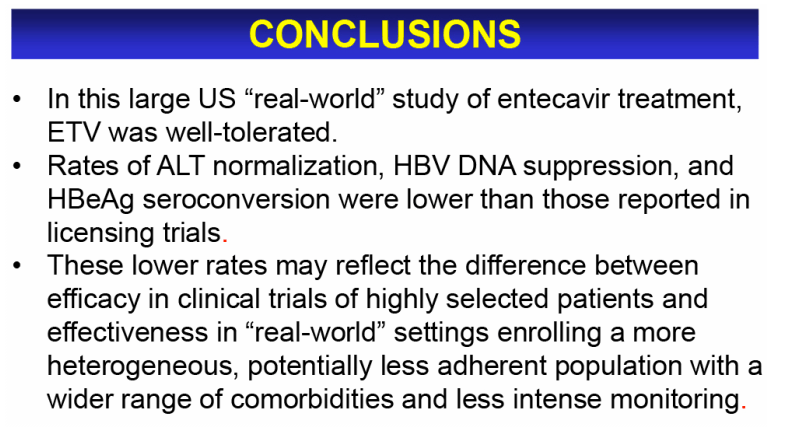
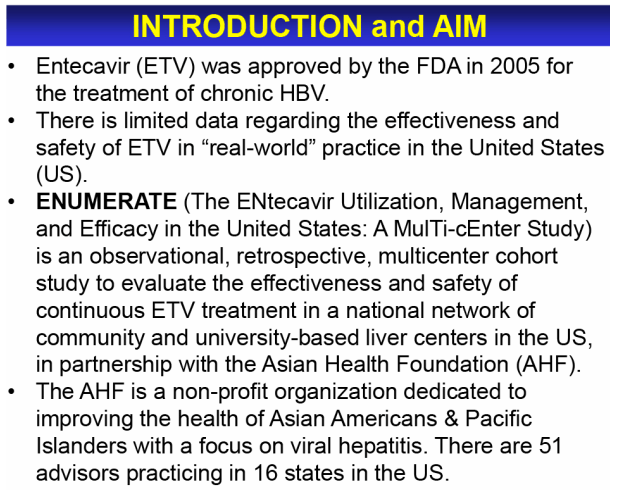
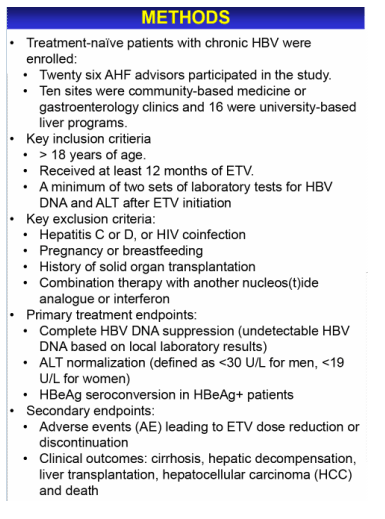
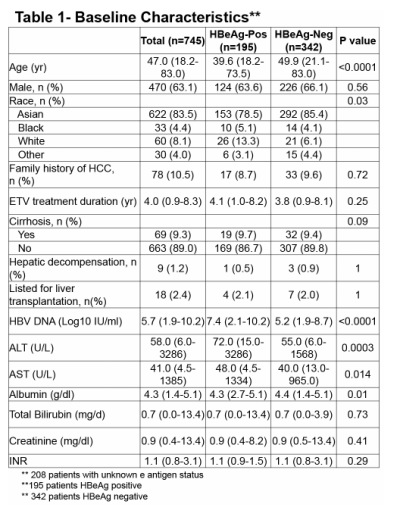
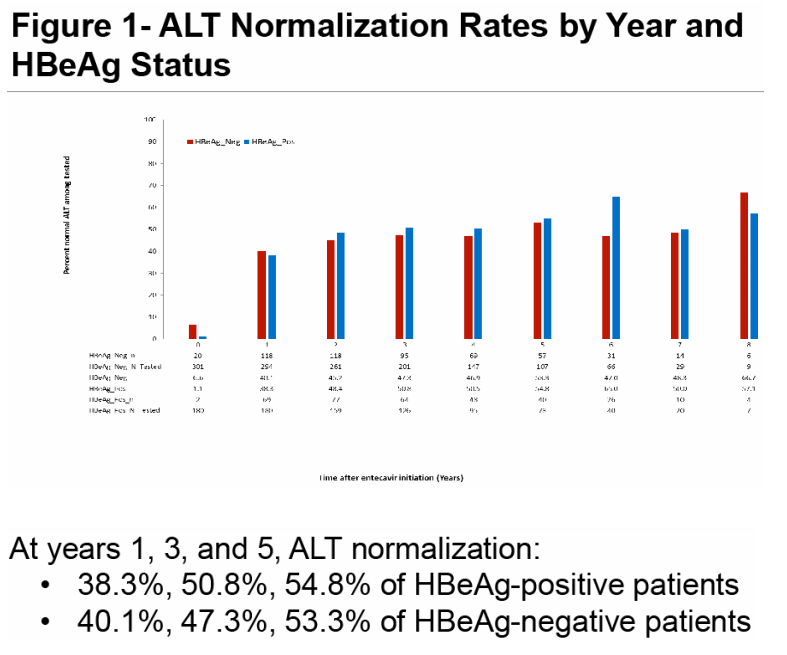
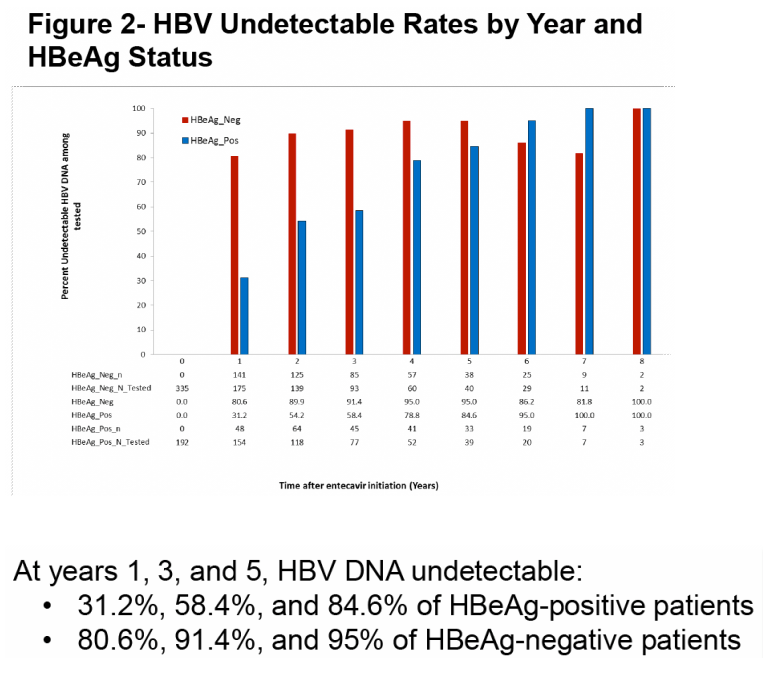
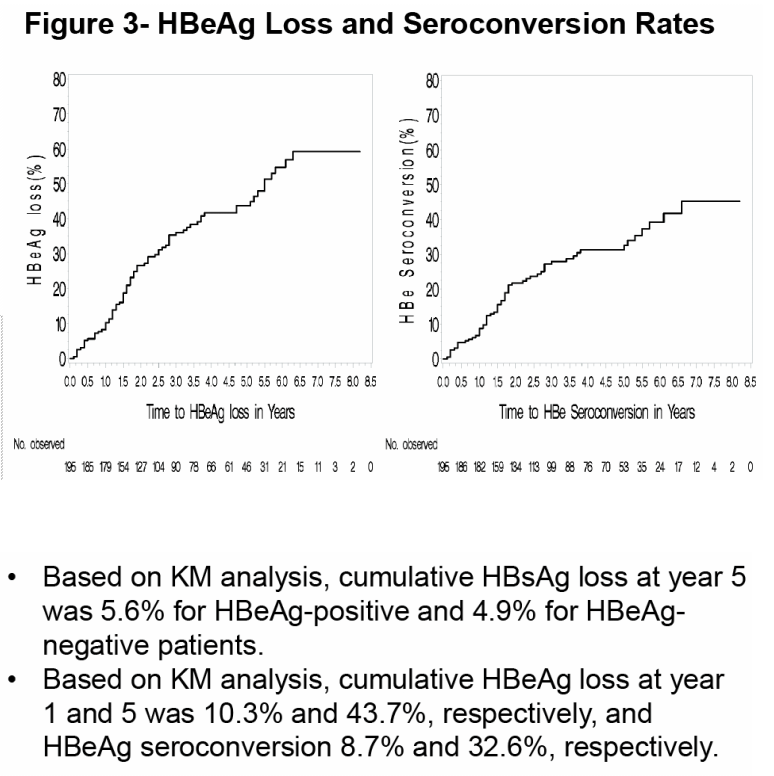
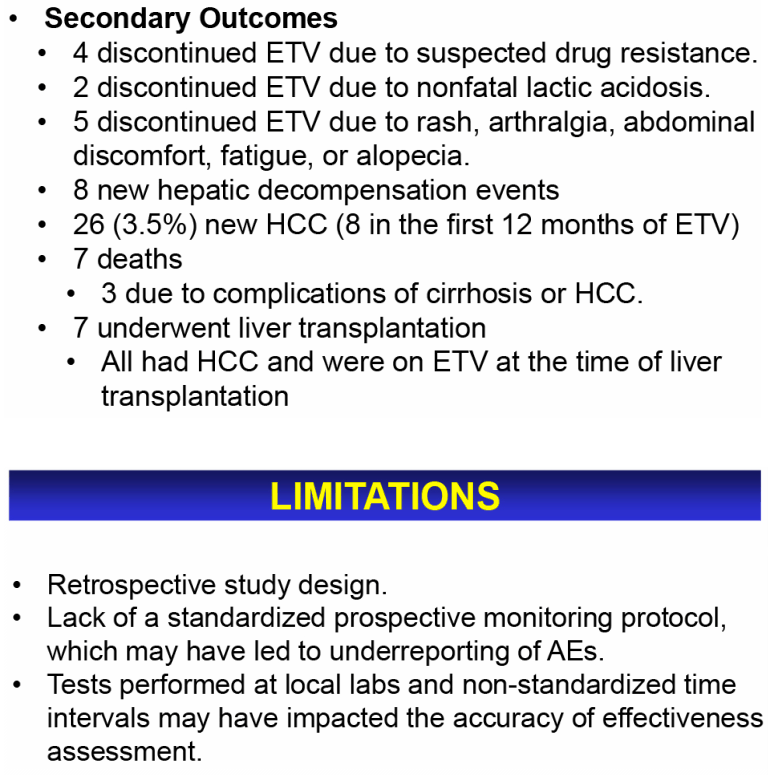
|
| |
|
 |
 |
|
|